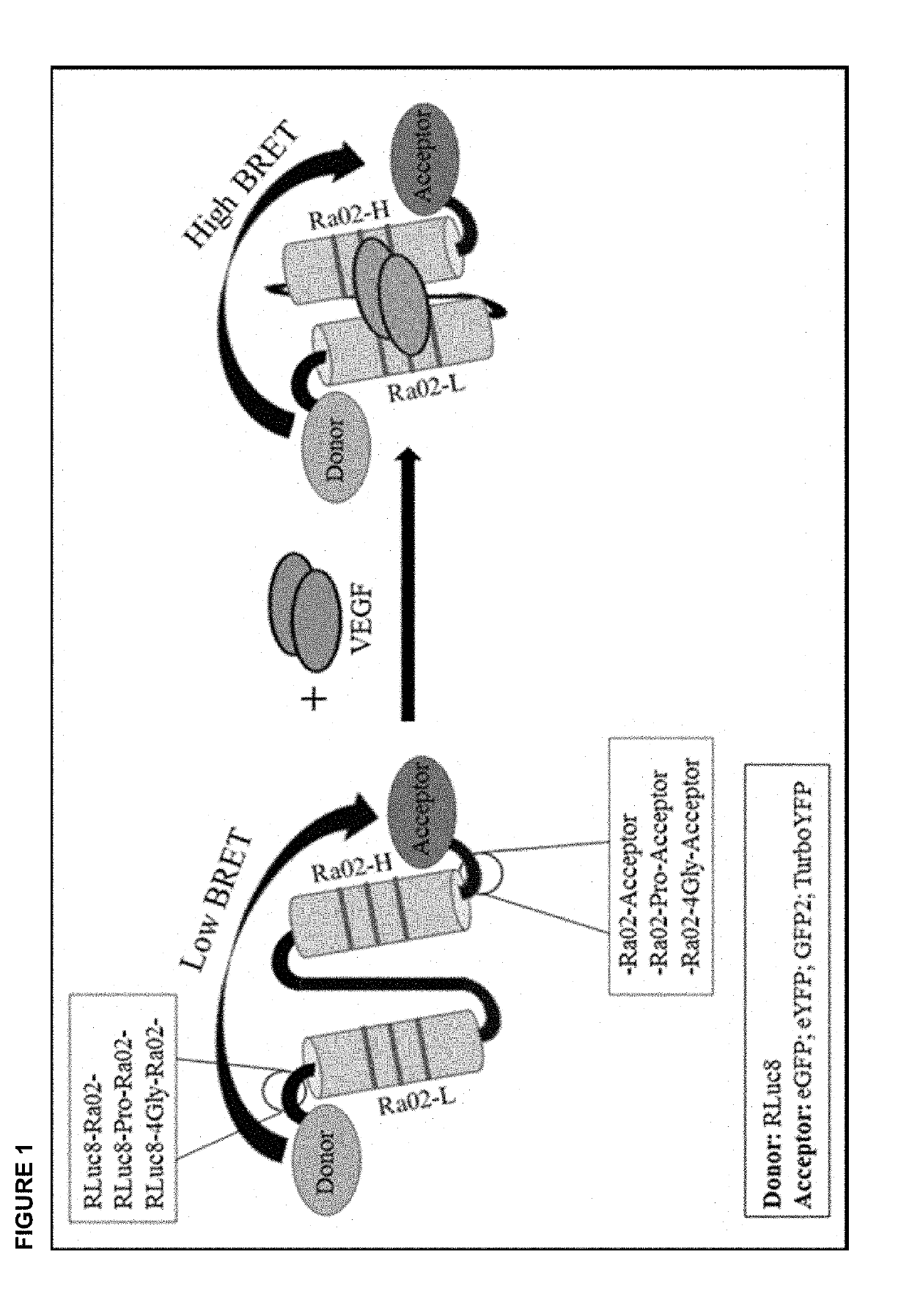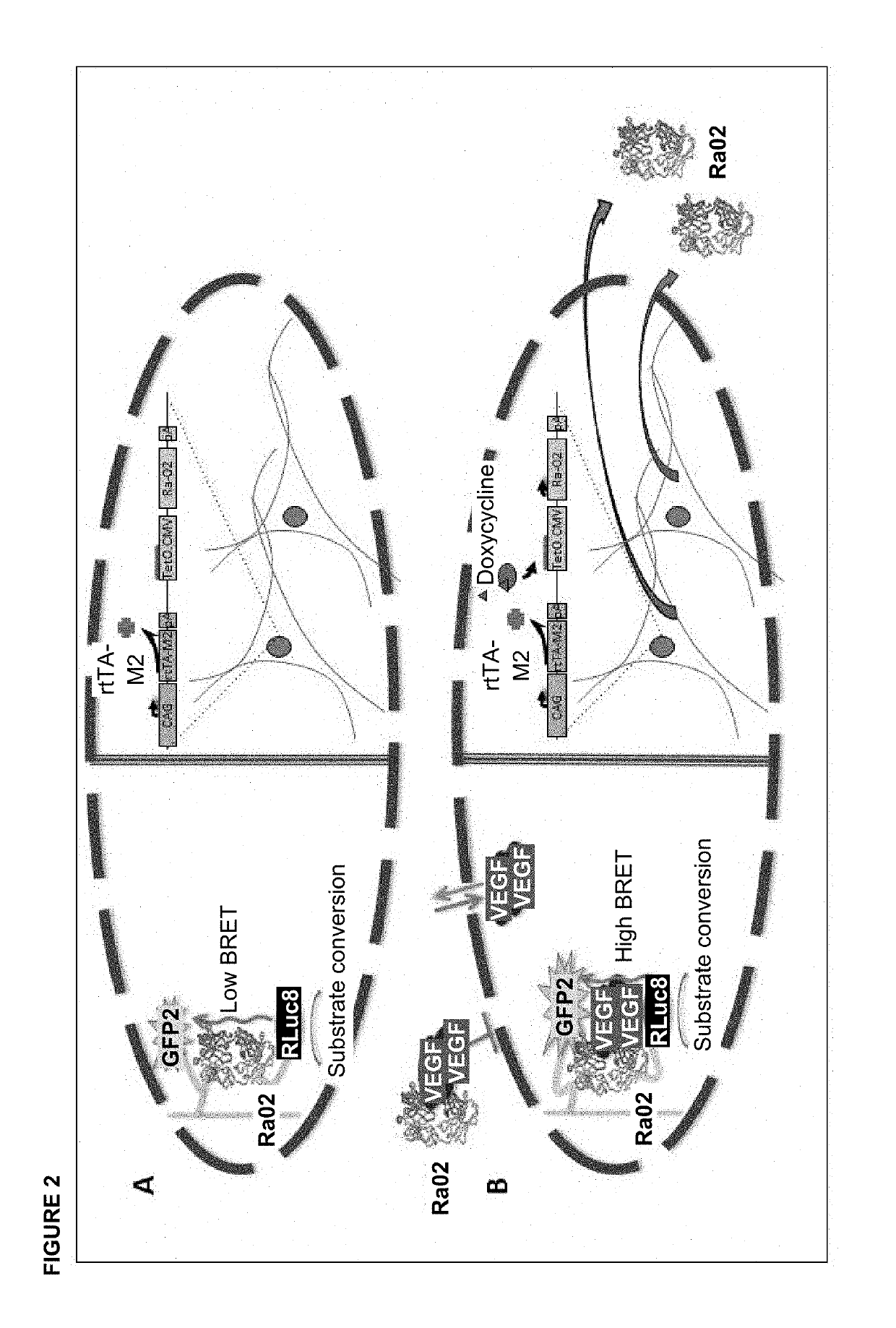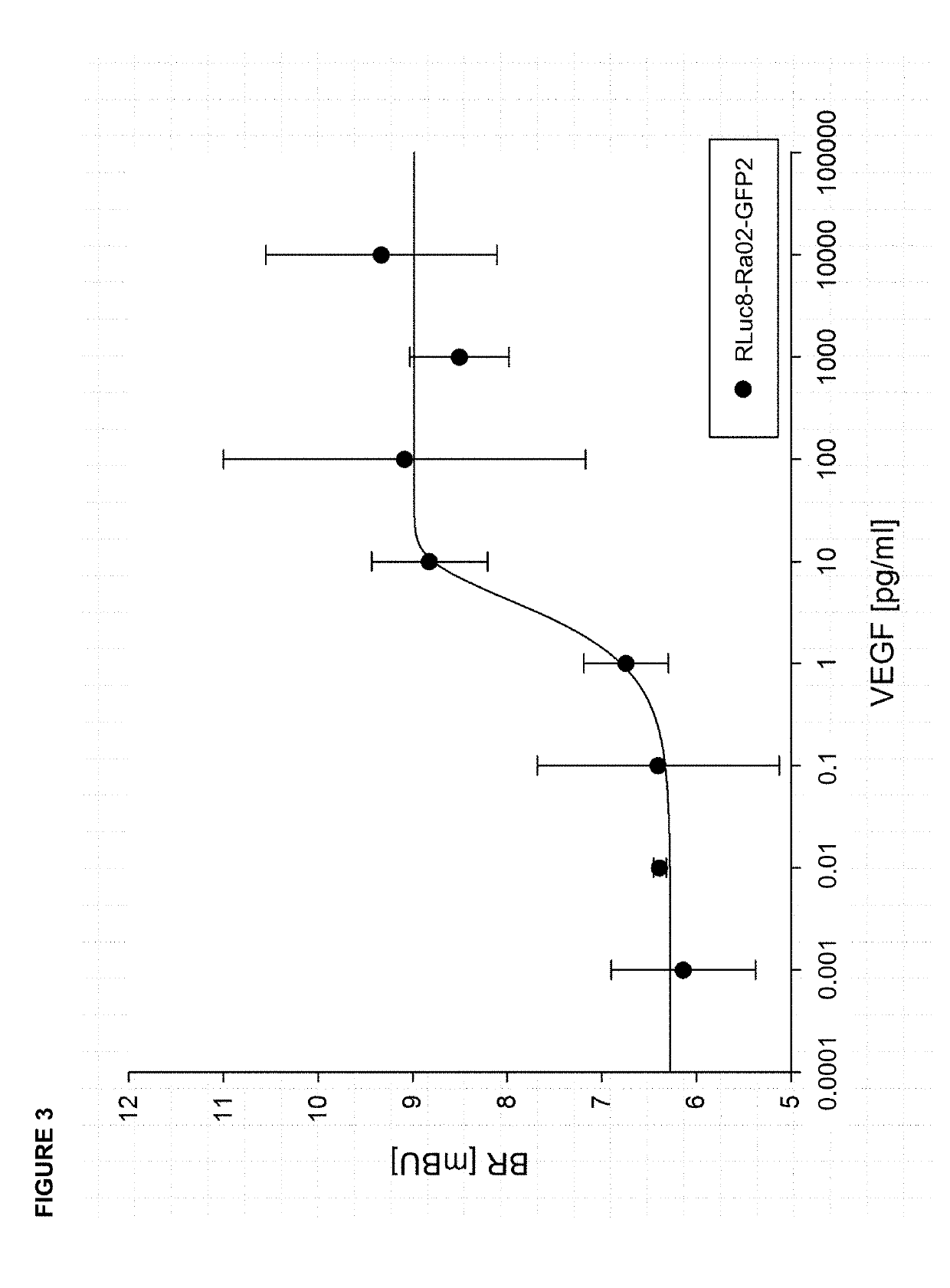Method for measurement and control of intracular VEGF concentration
a technology of intracular veins and vegf, which is applied in the direction of instruments, material analysis, biological material analysis, etc., can solve the problems of short half-life of anti-vegf molecules in the human eye, uncontrolled formation of new blood vessels, and impede repeated injections to provide sustained vegf blockad
- Summary
- Abstract
- Description
- Claims
- Application Information
AI Technical Summary
Benefits of technology
Problems solved by technology
Method used
Image
Examples
example 1
tion of Intraocular VEGF Concentration In Vivo
[0025]According to the present invention, the intraocular VEGF concentration in vivo is determined via the following steps. First, the substrate for Renilla luciferase, Coelenterazine, is administered to the patient whose VEGF concentration should be measured in the eye and to whom the VEGF-binding biosensor, for example RLuc8-Ra02-GFP2 (SEQ ID No.1), or RLuc8-Ra02-YFP, or RLuc8-Ra02-eYFP, or RLuc8-Ra02-TurboYFP, encapsulated in an insert, e.g. a microbead made from alginate, according to the present invention (FIG. 1, FIG. 2) has been implanted previously into the eye. Coelenterazine is commercially available, e.g. as EnduRen™ or ViviRen™ Live Cell Substrate (Promega), and is administered intravenously or orally, respectively, at doses that are known to the skilled worker. Subsequently, at an appropriate time after administration, the BRET ratio is measured using filters absorbing light at wavelengths of below 450 nm (signal from Renill...
example 2
of Anti-VEGF Synthesis In Vivo
[0026]According to the invention described herein, the insert harbouring the VEGF-binding biosensor may additionally encapsulate a tetracycline-inducible (TetOn) vector encoding anti-VEGF molecules that is transduced into HEK-293 cells (FIG. 2). This vector is TetOn-Ra02 that has been previously described (Wimmer et al., Functional Characterization of AAV-Expressed Recombinant Anti-VEGF Single-Chain Variable Fragments In Vitro. J Ocul Pharmacol Ther. 2015 June; 31(5):269-76) (SEQ ID No. 2). Expression of anti-VEGF molecules from TetOn-Ra02 is induced by oral administration of doxycycline to the patient with doses according to the state of the art (0.5 to 10 mg / kg body weight). The newly synthesized anti-VEGF molecules bind to VEGF that is present in the eye and therefore reduces the concentration of free VEGF. The reduction of VEGF concentration can be determined at an appropriate time after administration of doxycycline by the method described in examp...
example 3
tion of Intraocular VEGF Concentration In Vitro
[0027]According to the invention presented herein, for determination of intraocular VEGF concentration in vitro, in a first step for example 6 μg of a vector encoding VEGF-binding biosensor molecules, for example RLuc8-Ra02-GFP2 (SEQ ID No. 1), are transfected in a 6-well with Lipofectamine 3000 (Invitrogen) into eukaryotic HEK-293 cells. This method is known to the skilled worker. RLuc8-Ra02-GFP2 comprises an anti-VEGF single chain variable fragment (anti-VEGF-scFv; Ra02) with Renilla luciferase (RLuc8) fused to its N-terminus and a fluorescent protein (GFP2) fused to its C-terminus. Afterwards, expression of RLuc8-Ra02-GFP2 biosensor molecules is allowed for 48 hours in an incubation chamber at 37° C. and 5% CO2. Expression is then verified by luciferase activity assay and fluorescence microscopy; both techniques are known from the state of the art. Subsequently, the newly synthesized biosensor molecules RLuc8-Ra02-GFP2 are isolated f...
PUM
| Property | Measurement | Unit |
|---|---|---|
| volume | aaaaa | aaaaa |
| concentration | aaaaa | aaaaa |
| concentration | aaaaa | aaaaa |
Abstract
Description
Claims
Application Information
 Login to View More
Login to View More - R&D
- Intellectual Property
- Life Sciences
- Materials
- Tech Scout
- Unparalleled Data Quality
- Higher Quality Content
- 60% Fewer Hallucinations
Browse by: Latest US Patents, China's latest patents, Technical Efficacy Thesaurus, Application Domain, Technology Topic, Popular Technical Reports.
© 2025 PatSnap. All rights reserved.Legal|Privacy policy|Modern Slavery Act Transparency Statement|Sitemap|About US| Contact US: help@patsnap.com



